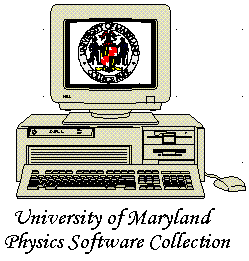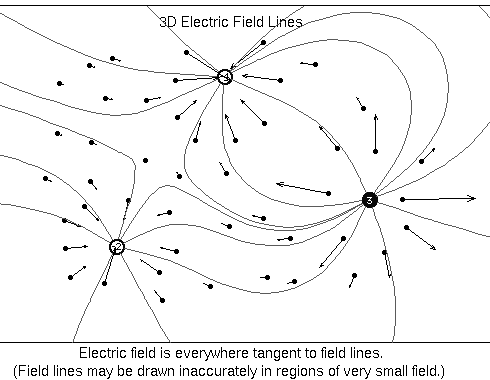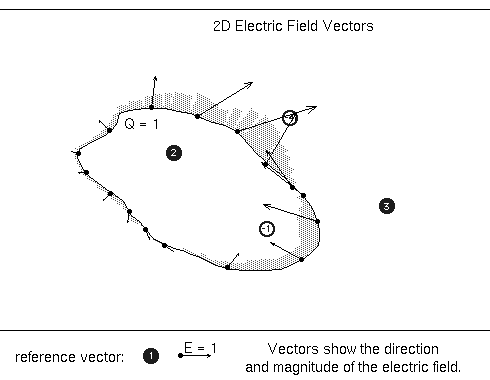
EMField
D. Trowbridge, Microsoft
B. Sherwood, Carnegie Mellon University
Brief description
This program allows the user to place charges at various points on the screen and display the electric field, lines of force, electrostatic potential, and equipotentials passing through any point. It also allows a nice display of Gauss's law and how contributions to the integral are obtained. Similar properties for the magnetic field can be displayed.
Pedagogical utility
The idea of electric and magnetic field is a difficult one for the introductory student. The field concept may be hard for students who are not too sure what a function is and the many representations we throw at them very rapidly are hard for them to disentangle and interpret. This program gives them opportunities to try out a number of cases and build good concepts. Highly recommended. Very useful as a lecture demonstration.
Appropriate for
- Physics 142,
- Physics 262,
- Physics 272
Screen views

Fig. 1: View of charges, E-field and field lines.

Fig. 2: View of Gauss's law display with charged rods. Fields and the surface and the contribution to the Gaussian integral are shown..
Availability
OWL LAB: The program is available from the OWL menu by choosing Classes / Phys262 / EMField..
LECTURE DEM: The program is on the IBM machine with the LCD projector on the directory PhAcSoft / EMField. Change to this directory and enter emfield.
A Windows version of the program is also available. Double click on the EMField icon in the E&M group in the Program Manager.
SOURCE: The program is marketed commercially by Physics Academic Software, The Academic Software Library, NC State U., Raleigh, NC 27695-8202. (Or phone 800-955-TASL.) Current price about $50..
Associated materials
Three one hour tutorials and some homework problems are available for this program. The tutorials cover the subjects:.
- Electric Forces-- This tutorial builds the idea of a vector field by developing the operational definition of a field.
- Electrostatic Potential -- This tutorial builds the idea of electrostatic potential energy.
- Ampere's Law -- This tutorial demonstrates how Ampere's law works for long straight currents.
Contact person
For tutorials, see
E. F. Redish, University of Maryland, College Park, MD 20742;
phone: 301-405-6120, fax: 301-405-6114, e-mail: redish@quark.umd.edu
Program help
Extensive on-line help is available from within the program.
This page prepared by
Edward F. Redish
Department of Physics, University of Maryland, College Park, MD 20742
Phone: (301) 405-6120, Email: redish@quark.umd.edu
Last revision 4. November, 1995.



